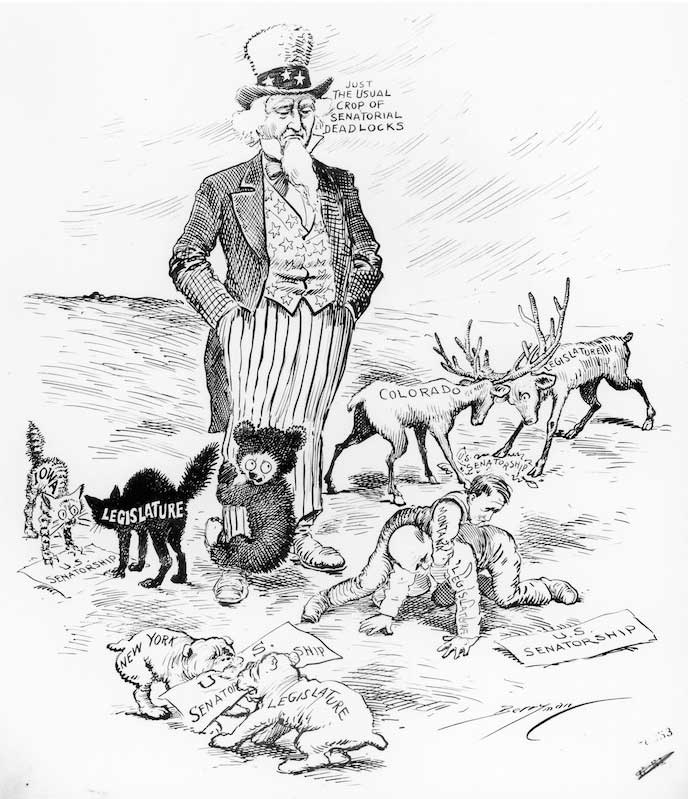Senators Directly Elected

The Seventeenth Amendment was ratified on April 8, 1913. It providing for the direct election of Senators. Until this time, Senators had been chosen by state legislatures.
Under the constitution, Senators were selected by the state legislators. The framers saw that Senators as representatives of the states. To the writers of the constitution, they were actually representatives of the government of the states and not directly the people of the state. The system began to fall apart in the 1850s as the country sled to the Civil War. In a number of cases, the state legislature was deadlocked, so some states had vacated seats in the Senate. In the post, Civil war period there continued to be challenged in selected Senators. There were frequent charges of corruption. In addition, state legislatures would often be deadlocked, so much so that between 1891 and 1905 states were deadlocked 45 times thus delaying the seating of senators.
As early as the 1820s, there were discussions on the direct election of Senators. The call for change grew and starting in 1893 and amendment to call for the direct election of Senators was introduced every year, but the Senate showed no interest in reforming. In 1907 Oregon initiated on their own direct elections of Senators and a number of other states followed suit.
The publisher William Randolph Hearst became a major supporter of reform, and he made sure that the issue was well covered in his newspapers and magazines. In 1911 Senator Bristow of Kansas introduced a constitutional amendment requiring the direct elections of Senators. One of the strongest supporters of the amendment was Senator William Borah of Idaho. Southern Senators opposed the amendment as did a number of Senators from other parts of the country. However, those Senators that had themselves been elected by direct elections were strong proponents. After a heated debate the Congress passed the amendment on May 13, 1912. It then went to the State to ratify. On April 8, 1913, Connecticut ratified the amendment allowing it to reach 3/4 of the states and become part of the constitution.
The following is the text of the amendment:
The Senate of the United States shall be composed of two Senators from each State, elected by the people thereof, for six years; and each Senator shall have one vote. The electors in each State shall have the qualifications requisite for electors of the most numerous branch of the State legislatures.
When vacancies happen in the representation of any State in the Senate, the executive authority of such State shall issue writs of election to fill such vacancies: Provided, That the legislature of any State may empower the executive thereof to make temporary appointments until the people fill the vacancies by election as the legislature may direct.
This amendment shall not be so construed as to affect the election or term of any Senator chosen before it becomes valid as part of the Constitution.
 >
>